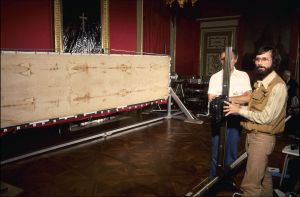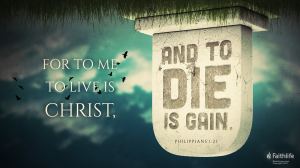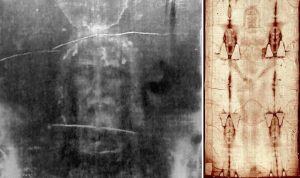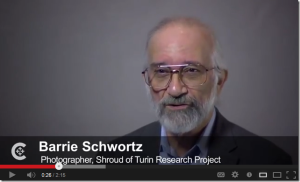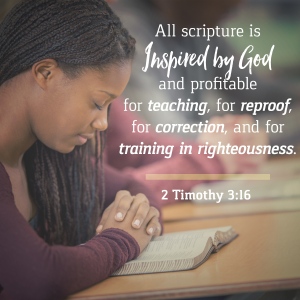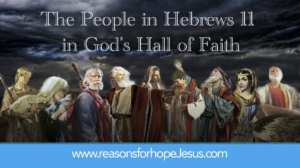What on earth is the Shroud of Turin?
What do you know about it?
(1) Nothing at all. (2) A little. (3) More than a little. (4) A lot.
Shroud and Turin are nouns. You remember, nouns come in three forms: person, place, or thing.
Turin is a place: A city in Italy.
Shroud is a thing. It is also a verb but more commonly used as a noun.
Definitions of shroud that pertain to the Shroud of Turin: “…to cover for protection … to dress for burial” (Webster’s Collegiate Dictionary).
The Shroud is not just any burial cloth. It supposedly shows the imprint image of the most well-known Person who has ever walked the earth … Jesus of Nazareth.
Multiple television documentaries on the Shroud of Turin have been aired. Beginning with the 1978 hour-long program summarizing the investigative results of the Shroud of Turin Research Project (STURP).
Ironically one of the (lead) team researchers was a Jewish professional photographer, Barrie Schwortz. Ironic because, with exception of Messianic Jews, neither religious nor secular Jews accept the New Testament record that Jesus is God’s Son—the Jewish Messiah Savior. Mr. Schwortz remains an ardent enthusiast concerning the Shroud of Turin’s (potential) authenticity.
(Photo of Barrie Schwortz on the televised show, Shroud of Turin, 1978)
I have seen most of the televised or online Shroud of Turin programs, including the 2017 National Geographic special entitled: Is It Real? The Shroud of Turin. The following is an introduction to that You Tube video:
“The 53-spuare-foot rectangle of linen known as the Shroud of Turin is one of the most sacred religious icons on Earth, venerated by millions of Christians as the actual burial garment of Jesus Christ.
“It is also among the most fiercely debated subjects in contemporary science, an extraordinary mystery that has defied every effort at solution.
“Over the 117 years since a photographic negative of the linen unexpectantly revealed the image of a tortured body, ranks of physicists and chemists have weighed in on the fabric’s age and the image’s composition. Forensic pathologists, microbiologists, and botanists have analyzed its bloodstains, along with specks of dirt and pollen on its surface. Statisticians have combed through mountains of data.”
The final paragraph of introduction to the Nat Geo program condenses the long-standing dilemma of this enigmatic relic:
“The sum result is a standoff, with researchers unable to dismiss the shroud entirely as a forgery or prove that it is authentic. ‘It is unlikely science will provide a full solution to the many riddles posed by the shroud,’ Italian physicist Paolo Di Lazzaro, a leading expert on the phenomenon, told National Geographic. ‘A leap of faith over questions without clear answers is necessary—either the faith of skeptics or the faith of believers.’”
This is a startling statement from a scientist (physicist). Especially his concession that science itself is not sufficient to solve the status of the Shroud of Turin. Most secular scientists are reluctant, some rigidly so, to admit that science can’t always determine (agree to) the final answer to any given material matter. At the minimum, they will often hold tight to a theoretical explanation. For skeptics of the Shroud, their hypothesis is that it is either a counterfeit relic or (generously giving the benefit of the doubt) perhaps a 13th or 14th century work of art to replicate and venerate the original shroud of Christ.
Paolo Di Lazzaro’s reference to the faith of skeptics could mean either those skeptical about the Shroud of Turin itself or a broader application. Meaning, those who do not believe or at least strongly doubt the very resurrection of Jesus Christ from the grave. Or anything else concerning the birth, life (including dozens of miracles performed by Jeus), death, burial and, therefore, burial shroud of Christ.
Likewise, the faith of believers could apply jointly to both Christian and non-Christian supporters of the Shroud’s authenticity. With many believers in Christ persuaded that the shroud is the burial cloth of Jesus himself because they want passionately for the shroud to be just that.
Media Handling of the Shroud of Turin
On a Personal Note: It’s good to be back after 8 months and 2 weeks of … well, I’ll call it a sabbatical from writing and posting Eye of Prophecy articles! The Lord willing, there will be a few more articles before I leave this earth, preferably still alive via the Rapture! If it’s my destiny to die before the Rapture, then so be it.
With the Apostle Paul, I confidently and gratefully say:
My purpose (mission) in this Eye of Prophecy article is threefold:
(1) Challenge the Conventional World View of Faith with a Biblical View
(2) Resulting in a Decisive Answer from the Most Reliable Source of All, Whether the Shroud of Turin is the Burial Cloth of Jesus Christ
(3) Leading To a Special Substitution for the Shroud with a Far More Significant Subject of Eternal Value
Today’s article will concentrate on Purpose Number 1. Points/Purposes 2 & 3 will be presented in the next article … Part II
But first: To further demonstrate the ongoing interest in the Shroud of Turin, you only need to check the multiple websites covering this controversial artifact. Additionally, there have been numerous articles, books, commentaries, and T.V. / Online (YouTube) programs.
For example: Because the Shroud of Turin essentially belongs to the Roman Catholic Church, a package of four television films on one DVD can be ordered through The Catholic Company via their website. Simply entitled The Shroud of Turin, it is the New Expanded Edition by Producer David Rolfe. The following are excerpts from the promotional introduction of that DVD:
“This is the definitive most up to date collection of 4 films on the Shroud of Turin … of award-winning filmmaking on the Shroud by acclaimed British film producer and director David Rolfe. All four films use the latest scientific, historical, medical, and archaeological research on the Shroud to reveal all the evidence for the authenticity of it as the burial cloth of Christ….”
The prelude goes on to summarize the four films:
“The Silent Witness … This film broke box office records when it opened in London in 1978. Kenneth More narrates what became the most successful film ever made on the subject…. This film greatly expanded interest in the Shroud worldwide.
“Shroud of Turin … Commissioned by the BBC in 2008, twenty years after the C14 test that cast a shadow over Shroud research, this film looks at how that test stands up against the weight of other evidence from history, archaeology, forensic medicine, art, and 3D analysis….”
*Note: That film was rebroadcast in April 2021. Also, to mention that I’ve seen all these programs plus others not produced by David Rolfe, including National Geographic T.V. documentary aired in June 2017 and a History Channel program released in September 2018. These films on the Shroud of Turin seemed to focus more on interviews and evidence suggesting or stating that the Shroud was not the real thing … at the worst a forgery and at the best only a “work of art.”
Yet it was a half-hour television show that I recently watched on the Smithsonian Channel which presented a highly condensed but, nevertheless, effective review of the pros and cons of this controversial cloth that, in part, led to this Eye of Prophecy article. Specifically, an astounding detail that came to me … and a handful of others as I subsequently discovered.
More on this dramatic and decisive disclosure in the next article (Part II). One that will clarify once and for all if the Shroud of Turin is genuine. Before that discernment, I had been an interested but neutral bystander regarding the legitimacy of the Shroud.
Continuing with the 3rd and 4th films in this 4-film package:
“Shroud … The official film for the 2010 Exposition of the Shroud. Written by Ian Wilson, it tells the story of the Shroud for our modern age of high technology to show the image of the Man on the Shroud as never before seen. This film does not shrink from examining the religious significance of what has become the single most studied article in history.”
The other film, Grave Injustice, attempts to provide more confirmation of the Shroud’s authenticity, “…telling how a recent carbon dating test of the Shroud that purportedly shows it to be a medieval fake was seriously flawed, and a more accurate test has yet to be made.”
The Shroud of Turin is so named because it has been kept since 1578 in Turin, Italy, inside the Cathedral of Saint John the Baptist. Pope Francis not long after his elective promotion as the current Pope of the Roman Catholic Church referred to the Shroud of Turin as an “icon of a man scourged and crucified.” Yet, he stopped short of dogmatically declaring it to be the burial cloth of Christ. In the 14th century a Catholic bishop asserted that the shroud (initially discovered or presented in 1354) was a fake which was officially approved by Pope Clement VII in 1390. Then later overturned by Pope Julius II (1506) who declared the Shroud to be real and authorized public reverence of it. However, the paradox to this day: The Vatican has not adopted an official position regarding the Shroud of Turin as the actual burial cloth of Jesus.
(Cathedral of Saint John the Baptist in Turin, Italy)
Disputed Data Surrounding the Shroud … Highly Reduced Summary
Although in some respects still captivating, there has been an overabundance of research, interviews, programs, and literature on the Shroud of Turin. Others would disagree with this opinion especially those who unequivocally support the Shroud as being the original cloth wrapped around the body of Jesus after he died and was taken down from the cross by Joseph of Arimathea.
My current view regarding the excessive emphasis on this continuing debate is that both sides of the cloth coin haven’t relied on or even adequately consulted the original source and highest authority. This authoritative source provides an indisputable resolution to the disputed evidence or testing or interpretation of that evidence—be it physical (physics), forensic medical, photographic image analysis, biological, chemical, material (of the shroud itself), or rules of handling the evidence.
But I’m getting ahead of myself.
Because of the redundant research and the large volume of literature and media documentaries presenting divergent views of the “facts”, I’m going to provide just a few of the crucial points highlighting why both sides of the authenticity issue are adamant that their position is correct. With, however, acknowledgment that there are those (both religious and secular) who have assumed a more neutral stance, as did I until recently.
Neither side has been granted victory in terms of positively proving their arguments. Today’s Eye of Prophecy article will set the stage; the next article (Part II) will then offer a final finding that should eliminate the debate over the Shroud of Turin. And, in so doing, a much bigger picture and a more superior subject will justifiably lower the Shroud’s status to a more appropriate level.
Though there are others, the following pros and cons represent the selected highlights of the differences:
Those Who Say the Shroud of Turin Is the Actual Burial Cloth of Christ
- The physical imprint on the cloth is clearly the outline of a man, head to foot
- The cloth reveals wounds/scars/stains virtually identical to a man beaten, crowned with thorns, stabbed (spear), and crucified (nailed to a cross) precisely as Jesus was killed
- The imprint was like a photographic negative on the cloth, but it could not have been a photograph or painting; thus, it was the forensic result of the dynamics of the resurrection
Those Who Say the Shroud of Turin Is Not the Burial Cloth of Christ or (Some Say) A Burial Cloth at All
- In 1988 a tiny strip of the cloth was removed and sent to 3 separate laboratories (University of Oxford, University of Arizona, Swiss Federal Institute of Technology) for Carbon 14 testing. Results: All three dated the strip from A.D. 1260 to 1390—over a Millenium since Jesus was on this earth. Plus, the dating matches the time frame when the Shroud first emerged. Not just for the secular scientists, but also for many others the debate was over. (*Note: Advocates of the Shroud’s legitimacy contend that the strip of cloth used for C14 dating was probably a repair fragment from medieval times and/or the cloth section contained residue from pollen or plants that distorted the C14 testing)
- The cloth is of a herringbone weave; however, the fabric weaves of the 1st century were plain (one or two-way weave), not the complex herringbone twill of the Turin Shroud. Thus, the Shroud could not have originated during the time or place of Jesus—First Century Israel
- Both religious and secular dissenters use (referring to but not necessarily deferring to) the Bible to counter proponents of the Shroud’s authenticity with the observation that none of the Gospels say anything at all about the linen cloths of Christ’s burial bearing an imprint of his body
In summary fashion, the preponderance (quantity and quality) of research would tend to favor the skeptics, but not entirely. Which is why there are still some well-meaning, intelligent, and persuasive professionals and lay people who ardently support the supposition that the Shroud is assuredly that of a man’s burial cloth, as opposed to a medieval work of art or a fabricated misrepresentation of Jesus’s burial cloths. With some still asserting that it is the actual Shroud of Christ Jesus.
(Images of the Shroud of Turin)
An Example/Representative of the Shroud’s Proponents
Perhaps the most devoted advocate for the continued research and analysis of the Shroud of Turin is Barrie M. Schwortz … introduced in the beginning of this article. So much so that he has established the most prominent websites for the Shroud of Turin.
As earlier indicated, Barrie Schwortz is Jewish (anyone who has read just a handful of my Eye of Prophecy knows of my love for Israel and the Jewish people … and why). Which is somewhat of a paradox; albeit he was part of the original research team in his professional capacity of photography.
Here is an excerpt from one online biographical resume (the first two paragraphs):
“Barrie Schwortz was the Official Documenting Photographer for the Shroud of Turin Research Project, the team that conducted the first in-depth scientific examination of the Shroud in 1978. Today, he plays an influential role in Shroud research and education as the editor and founder of the internationally recognized Shroud of Turin Website (www.shroud.com), the oldest, largest, and most extensive Shroud resource on the Internet, with more than ten million visitors from over 160 countries….
“Mr. Schwortz has conducted Shroud lectures around the world. He has appeared in programs and documentaries on every major broadcast and cable television network, including the History Channel, the Discovery Channel, the Learning Channel, the National Geographic Channel, CNN, PBS, the BBC, Fox News, Channel 1 Russia, the Coast to Coast AM radio show, Catholic Answers radio and Vatican Radio. His photographs have appeared in hundreds of books and publications including Life Magazine, National Geographic, Time Magazine, and Newsweek and in countless television documentaries. He has written many Shroud articles…. He continues to participate in Shroud research with experts around the world and co-authored a book with Ian Wilson titled, “The Turin Shroud: The Illustrated Evidence” published in August 2000….”
The remainder of Mr. Schwortz’s bio lists other professional positions and activities.
Barrie Schwortz’s primary online source is entitled: Shroud of Turin Website. When I logged into this website on 11-28-2022—as part of my recent research on the Shroud—the following introduction stood out (I’ve placed the narrative text in italics; the bold and underline words are part of the website; the parenthesis are mine):
Welcome to the Shroud of Turin Website
Pulse aqui para version en espanol de esta pagina (font in blue color)
Summer/Fall Update! August 31, 2022 (this was in large blue probably size 20 font)
You are visitor 12,484,233 to view this page
The Shroud of Turin is a centuries old linen cloth that bears the image of a crucified man. A man that millions believe to be Jesus of Nazareth. Is it really the cloth that wrapped his crucified body, or is it simply a medieval forgery, a hoax perpetrated by some clever artist? Modern science has completed hundreds of thousands of hours of detailed study and intense research on the Shroud. It is, in fact, the single most studied artifact in human history, and we know more about it today than we ever have before. And yet, the controversy still rages. This web site will keep you abreast of current research, provide you with accurate data from the previous research and let you interact with the researchers themselves. We believe that if you have access to the facts, you can make up your own mind about the Shroud. Make sure you visit the page where you can Examine the Shroud of Turin yourself. We hope you enjoy your visit. Barrie M. Schwortz, Editor.
Some observations: I respect Mr. Schwortz’s professionalism and persistence in his ongoing research, commentaries, and general support of “the facts.” Yet, the primary reason for the still raging controversy is that there are conflicting interpretations of the evidence. What is factual to one side is not necessarily so to the opposing side. And there are some (not all) on both sides whose underlying belief system influences—to the point of manipulation or prejudiced persuasion—an otherwise objective analysis of and opinion on ALL the evidence.
(More recent photograph of Mr. Schwortz)
Is there, then, any supreme source—scientific, historical, archeological, textual, and/or biographical—that could render a definitive decision, reliable resolution, and supreme settlement to the still pending mystery of and debate over the Shroud of Turin?
As previously indicated: I’m convinced that the answer to that question is a resounding, YES.
Which leads to the three stated objectives of this article, beginning with:
(1) Challenge the Conventional World View of Faith with a Biblical View
In the context of the Shroud of Turin, this examination of faith stems from the following excerpt of the quote by physicist Paolo Di Lazzaro cited in the early part of today’s article:
“A leap of faith over questions without clear answers is necessary—either the faith of skeptics or the faith of believers.”
In general terms, leap of faith is or can be synonymous with blind faith.
However, I don’t believe that a Biblical view (faith of believers) in general or the Biblical view on any given subject requires a leap of faith, nor is it blind faith.
Faith is defined in Webster’s Collegiate Dictionary as: “allegiance to duty or a person … belief and trust in and loyalty to God. Belief in the traditional doctrines of a religion… firm belief in something for which there is no proof. Complete trust… something that is believed esp. with strong conviction … a system of religious beliefs….” (Underlined emphasis mine to identify the synonyms)
Other synonyms (nouns): confidence, devotion, reliance, commitment, dedication.
Verb form: Believe, trust.
Traditional beliefs still prevalent the world over include but are not limited to trusting in:
State Systems And/or Dictators Running the State: Such as Fascism, Communism, Socialism, Totalitarianism
National Forms of Democracy: Parliamentary or Congressional representation in which most people (through voting) place their trusted support in or give their loyalty to a particular Party and/or the leader of that party.
World Religions and Cults (Including Mormonism and Catholicism): All possessing one common denominator—a sophisticated system (virtually impossible to follow) of rules and regulations that must be kept earning whatever rewards the religion designs. Plus, enough good deeds outweighing the bad behavior to hopefully merit whatever version of heaven or eternal life or Nirvana (Buddhism) that may be awaiting them.
*Note: I’m not including Christianity (Biblical Christian faith) as a religion. Reason: The Christian faith is completely based on and in a Person; not some religious system, or central organized church, or ecclesiastical hierarchy. It is the only creed that has a Savior. Trusting this Savior for who he is and what he has done for humanity that we could not do for ourselves—a substitutionary sacrificial death for our ugly sins.
Everyone believes in something and/or someone, even if it’s themselves—which is rapidly becoming the norm in our post-modern world. Included in the spurning of anything religious and relying on one’s feelings to arbitrarily set their own standards of truth, morality, and all things existential is the belief that, “what is true for you may not be true for me.” In fact, many have sadly reached the conclusion that there is no such thing as absolute truth or anything absolute.
Everything is relative to and depends on what a person thinks and how a person feels about the subject or situation at hand. Regarding the abundance of religious systems, the mantra of some says, “there are many paths to God or gods.” Regarding faith: No matter what the event, problem, or decision to make, “just have faith and everything will turn out okay.” Or if you “believe in yourself” practically anything is possible in life.
As opposed to:
The fallacy with this kind of reasoning is that each one of these belief systems and assertions is an absolute statement of its’ own. That, and the hard-knock realities of life prove that this kind of shaky, vague, feel-good faith often fails. Plus, every religion claims that it is the either the only way or at the very least, the best way to…. You fill in the blanks.
Whereas the true Christian faith is in a Person who lovingly but unequivocally said: “…I am the way, the truth, and the life. No one can come to the Father except through me” (John 14:6).
In summary of the prevailing worldview, there is an increasing reliance on feelings more than faith, or faith in those feelings. Just “have faith.” Faith in what? Their answer: “That’s up to the individual.” Which God certainly allows for every person who has ever lived … free choice. But as the Bible clearly states in several passages: the ultimate destiny-determining choices are between truth and lies, good and evil, eternal life and eternal death … heaven or hell.
The Biblical View of Faith
I firmly believe that the Triune God of the Bible IS (the only) GOD. That the Bible is the very Word of God; therefore, containing precise facts and absolute truth. Objective evidence will be provided in the next article (Part II) to further support that assertion.
Let’s look at the Bible’s dynamic description of faith. *Note: When Scripture is quoted in Eye of Prophecy articles, it comes from the New Living Translation (NLT), unless otherwise noted.
“Faith shows the reality of what we hope for; it is the evidence of things we cannot see” (Hebrews 11:1).
In another translation: “Now faith is the assurance of things hoped for, the conviction of things not seen” (New American Standard Bible).
And though I don’t refer that often to the King James Version, that translation is still my favorite for Hebrews 11:1. “Now faith is the substance of things hoped for, the evidence of things not seen.”
Hebrews Chapter 11 (known as the faith chapter) and other Biblical passages on faith tell us that faith thrives when it is exercised (placed) in the Lord. Under the Old Covenant (Testament) it was real-time trust in Father God and expectant belief in the coming Messiah who would be the once and for all supreme sacrifice (Isaiah 53) to replace the repeated animal sacrifices for sin required by the Law of Moses. Under the New Covenant (Testament) redeeming faith is in that Messiah—Jesus, the Son of God.
The very foundation of Biblical faith is belief that the Lord is Creator of all things.
“By faith we understand that the entire universe was formed at God’s command, that what we now see did not come from anything that can be seen” (Hebrews 11:3, emphasis added).
Did you catch the profound proposal of the italicized words? Though no person has ever seen God (the Father) nor ever will this side of heaven, it is by faith (trust, belief) that we understand (comprehend, realize, appreciate, know, recognize, grasp, fathom) that the universe (everything including all life) was formed by God’s verbal command.
Reading further: “And it is impossible to please God without faith. Anyone who wants to come to him must believe that God exists and that he rewards those who sincerely seek him” (Hebrews 11:6).
Neither in the definition of faith (verse 1) nor in the personal trust in a Personal God (verse 6) does it declare or infer that this faith is a blind faith that requires a “leap of faith” because allegedly there is little or no proof scientifically or objectively that God exists.
To the contrary it’s quite easy to believe in the existence of God—Father, Son, and Holy Spirit—because of the extraordinary existential evidence above, below, and all around us.
Faith is not only for the future; it is for the past (original creation) and present. Not only in the more general revelation of God through His creation, but also in the special revelation of the Lord through his Word, the Bible. Which is replete with historical events, biographies, and direct communications by/from God and later the Son of God, Jesus Christ. Also, divine inspiration from the Third Person of the Triune God—the Holy Spirit—given to the authors of the Old Testament and New Testament books.
Regarding the general revelation of God and his creation, the relevance of a commonly used analogy is so very appropriate: “Every watch has a watchmaker.”
As complicated as a watch or clock is, the universe and its physical laws (such as gravity) and the stunning complexity and variety of species within the even more dramatic differences between the families of living creatures—insects, fish, birds, animals of all kinds, and of course human beings—is infinitely greater in comparison to a watch and its maker. Especially when telescopes and microscopes show us the magnificent macro and marvelous micro features of our world. And not to forget the astounding assortment of plant life on this planet.
Macro Example: “In the beginning God created the heavens and the earth. The earth was formless and empty, and darkness covered the deep waters. And the Spirit of God was hovering over the surface of the waters. Then God said, ‘Let there be light,’ and there was light” (Genesis 1:1-3).
“The heavens proclaim the glory (very essence) of God. The skies display his craftsmanship. Day after day they continue to speak; night after night they make him known. They speak without a sound or word; their voice is never heard. Yet their message has gone throughout the earth, and their words to all the world….” (Psalm 19:1-4, parenthesis mine).
“Both day and night belong to you; you made the starlight and the sun. You set the boundaries of the earth, and you made both summer and winter” (Psalm 74:16-17).
“…O Lord my God, how great you are! You are robed with honor and majesty. You are dressed in a robe of light. You stretch out the starry curtain of the heavens… (we now know the universe is virtually endless and is constantly expanding)” (Psalm 104:1-2, parenthesis mine).
*Footnote Commentary: Evolution … Seriously! As some have said: It takes far more faith to believe in evolution than in the Creator. Belief in evolution is indeed a blind leap of faith!
Micro Example: “You made all the delicate, inner parts of my body and knit me together in my mother’s womb. Thank you for making me so wonderfully complex! Your workmanship is marvelous—how well I know it. You watched me as I was being formed in utter seclusion, as I was woven together in the dark of the womb. You saw me before I was born…” (Psalm 139:13-16a, italics & bold for emphasis).
*Footnote Commentary: Abortion … Please, don’t do it. Nine times personal pronouns are used of I, me, or my in this passage from King David which indisputably confirms that a human being is created at the moment of conception. In the “I” of the 3rd sentence, David is not referring directly to his existence in the womb.
Macro & Micro Addendum: “So God created human beings in his own image. In the image of God he created them; male and female he created them” (Genesis 1:27).
“…This explains why a man leaves his father and mother and is joined to his wife, and the two are united into one” (Genesis 2:24).
*Footnote Commentary: LGBTQ relationships & Same Sex Marriage … Don’t go there. It is a direct denial of and disobedience to God’s decree and purpose that reproduction for humanity is only possible between a man and a woman. Which also is to be the only source for sexual pleasure.
The Christian Faith is Not a Blind Faith
To further validate that Biblical faith is not blind, rather it’s directed to and placed in a Person, let’s return briefly to Hebrews Chapter 11 which provides a list of individual examples. Such as:
“It was by faith that Abel brought a more acceptable offering to God than Cain did…” (Hebrews 11:4a).
It was by faith that Enoch was taken up to heaven without dying—he disappeared, because God took him. For before he was taken up, he was known as a person who pleased God. And it is impossible to please God without faith…” (Hebrews 11:5-6a).
“It was by faith that Noah built a large boat to save his family from the flood. He obeyed God, who warned him about things that had never happened before … and he received the righteousness that comes by faith” (Verse 7).
“It was by faith that Abraham obeyed when God called him to leave home and go to another land that God would give him as his inheritance. He went without knowing where he was going. And even when he reached the land God promised him, he lived there by faith… And so did Isaac and Jacob, who inherited the same promise” (Hebrews 11:8-9).
“And Abram believed the Lord, and the Lord counted him as righteous (right standing with God) because of his faith” (Genesis 15:6, parenthesis mine).
Notice how each of these passages connect faith with God … trust in the Lord which leads to agreement with and obedience to God’s Word and Way.
Through inspiration from the Holy Spirit, Israel’s King David understood that one of his descendants would one day rule and reign from Jerusalem over the entire earth. This King of all kings would also be The High Priest. David fully grasped (believed) that this eternal King and Priest (who was and is and is to come) is none other than the Son of God (see Psalm 2)
This is David’s astonishing disclosure: “The LORD said to my Lord, ‘Sit in the place of honor at my right hand until I humble your enemies, making them a footstool under your feet.’ The LORD will extend your powerful kingdom from Jerusalem; you will rule over your enemies. The LORD has taken an oath and will not break his vow: ‘You are a priest forever in the order of Melchizedek’” (Psalm 110:1-2 & 4; emphasis added; The capitalized LORD in Scripture is a substitution for God’s name YHWH, Yahweh; my Lord is Adonai in Hebrew meaning master, superior, sir—referring to the coming Messiah who is you in this passage).
(See Eye of Prophecy article, Melchizedek … A Man of Mystery! Published 3-3-2018).
With the New Covenant promised by God through the prophet Jeremiah (Jeremiah 31:33-34), implemented by the death, burial, and resurrection of Jesus Christ, the Lord’s new Way for the Jews and then to the Gentiles is faith in His Son—Jesus. The innocent for the guilty, the just for the unjust, the righteous for the unrighteous!
Things to Ponder
The next Eye of Prophecy article (Part II) will present what I believe to be a final resolution to the intriguing issue and ongoing debate: whether the Shroud of Turin is the burial cloth of Jesus Christ. However, in that article as in today’s post, the (by far) bigger picture of the crucified and risen Christ (Messiah) remains the pivotal point, instead of the burial cloth or clothes that covered him. And for only three days at that!
The 2nd and 3rd points/purposes mentioned earlier and covered in the next article:
(2) Resulting in a Decisive Answer from the Most Reliable Source of All, Whether the Shroud of Turin is the Burial Cloth of Jesus Christ
(3) Leading To a Special Substitution for the Shroud with a Far More Significant Subject of Eternal Value
Jesus is not only the spectacular subject, but also the overwhelming object of our faith.
What Jesus told the Jewish religious leader Nicodemus was/is intended for the whole world:
Pardon of our sins and eternal life cannot be earned. Rather, they are gifts from the Lord. The only thing required of every person is to believe and receive Messiah Jesus as Savior and Lord.
A large crown searching for Jesus, “…found him on the other side of the lake and asked, ‘Rabbi, when did you get here?’
“Jesus replied, ‘I tell you the truth, you want to be with me because I fed you, not because you understood the miraculous signs. But don’t be so concerned about perishable things like food. Spend your energy seeking the eternal life that the Son of Man can give you. For God the Father has given me the seal of his approval.’
“They replied, ‘We want to perform God’s works, too. What should we do?’
“Jesus told them, ‘This is the only work God wants from you: Believe in the one he has sent’” (John 6:25-29, emphasis added).

